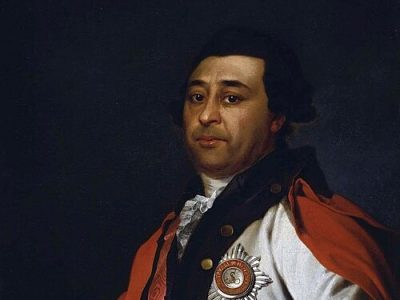Famous People of African Heritage: Ivan Gannibal, Russia
Ivan Abramovich Gannibal: Africa Meets Imperial Russia
Ivan Abramovich Gannibal (1735–1801) rose from elite military schooling to stand as one of 18th-century Russia’s most decorated commanders. As the first-born son of Abram Gannibal, African prince turned Peter the Great’s godson and a pioneering engineer, Ivan inherited a legacy of ambition and service.
Early Years and Education
Ivan was born on June 5, 1735, in Karjaküla, then part of the Reval Governorate (now Estonia). He grew up in a family of ten children under his father Abram and Swedish-German mother Christina Regina Siöberg. Driven by destiny, he joined the Naval Artillery School in Saint Petersburg at age nine. Through discipline and skill, he advanced to the Imperial Russian Navy as an officer, following in his father’s esteemed path.
Hero of the Russo-Turkish War
The Russo-Turkish War (1768–1774) brought Ivan into the spotlight. As a brigadier around age 34, he led a bold detachment of 300 men during the siege of the Ottoman fortress at Navarino (modern-day Pylos, Greece). This daring bombardment helped force the fortress’s surrender. For his daring, he received the prestigious Order of Saint George, 3rd class.
Later that year, at the Battle of Chesma, his ship St. Eustathius blew up under heavy fire. Ivan survived through the heroism of his men, who rescued him from the sea.
Rising Through Ranks
Returning to Russia in triumph, Ivan quickly climbed the military ladder. By 1772, he became a major-general. Four years later, Catherine II appointed him commander of naval artillery. In 1777, he earned a seat on the Russian Admiralty Council—the elite body governing the Navy (worldhistoryedu.com).
Building Kherson: A Strategic City
In 1778, Catherine entrusted Ivan with an audacious task: to build the Kherson Fortress and establish the city. He completed this colossal task swiftly, giving Russia a vital port on the Black Sea. For this achievement, Catherine awarded him three high honors:
- Order of St. Vladimir, 1st class (1780)
- Order of St. Alexander Nevsky (1781)
- A jeweled snuffbox with her portrait
- A vast estate near Kherson in present-day Ukraine.
A square in Kherson still bears his name today.
Final Rank and Retirement
In 1784, after a falling out with Prince Potemkin, Ivan retired with the rank of Général en Chef, the same rank as his father’s highest office. He spent his final years at his father’s estate in Suyda, near what is now Saint Petersburg. He passed away on October 12, 1801, childless but honored, and was laid to rest at the Lazarevskoe Cemetery, Alexander Nevsky Lavra.
A Legacy Interwoven with History
Ivan’s life bridged continents and cultures. As a Black-Russian admiral, he shattered stereotypes and founded a major city. His military achievements during the Russo-Turkish War anchored Russia’s southern defenses. His career set standards for future naval officers.
His story also threads into the fabric of Russian literature. Ivan was the great-uncle of Aleksandr Pushkin, Russia’s iconic poet. Pushkin praised him in My Genealogy, celebrating Ivan’s courage at Chesma and Navarino.
Why Ivan Gannibal Matters Today
- Trailblazer of Diversity. Ivan’s success in a predominantly white aristocracy highlights historical Black excellence in unexpected places.
- Military and Civic Architect. He left tangible legacies—fortresses, cities, and port defenses.
- Cultural Bridge. As Pushkin’s forbear, Ivan aids conversations about race, heritage, and identity.
Conclusion: A Hero Rediscovered
Ivan Abramovich Gannibal was more than a military hero. He was a symbol of diversity and unwavering duty. His legacy lives on in Kherson’s streets, Russian naval history, and literary lineage. Feelnubia salutes this extraordinary Black presence in global history—an African heart that beat within Imperial Russia.
Read more about the global Impact of the African diaspora.

